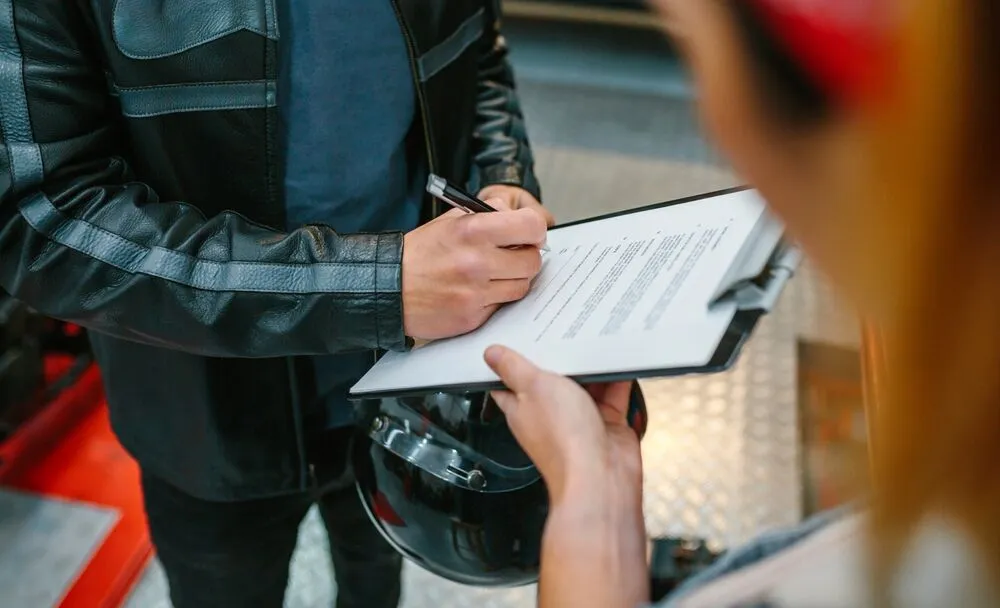Being involved in a motorcycle accident can be a traumatic experience, and navigating the insurance claims process can add to the stress. Whether you’re the rider or the driver involved, understanding how insurance claims work after a motorcycle accident is essential for ensuring that you receive the compensation you deserve. In this post, we’ll break down the key steps in making an insurance claim and offer tips for handling the process effectively.
Step 1: Report the Accident to Your Insurance Company
As soon as you’re able, you should contact your insurance provider to report the accident. This is typically required by your policy, and failing to notify your insurer promptly could negatively affect your claim. Even if you don’t think you were at fault, it’s crucial to inform your insurance company so they can begin investigating the accident.
When you report the accident, provide them with all necessary information, including:
-
The date, time, and location of the accident
-
Names and contact information of other drivers and passengers involved
-
Witness information (if available)
-
A brief account of what happened
It’s important to be truthful and factual in your description of the accident. Avoid speculating on fault or admitting any liability at this stage, as your insurance company will conduct its own investigation into the cause of the crash.
Step 2: Understand the Types of Motorcycle Insurance Coverage
Motorcycle insurance can vary widely, and the type of coverage you have will influence how your claim is handled. Common types of motorcycle insurance include:
-
Liability Insurance: This is the minimum coverage required by law in most states. It covers damages and injuries to others if you are at fault in the accident. However, it doesn’t cover your own injuries or damages.
-
Collision Coverage: This type of insurance covers the cost of repairs to your motorcycle if it’s damaged in a collision, regardless of who’s at fault. If you have collision coverage, you can file a claim to repair or replace your motorcycle after an accident.
-
Comprehensive Coverage: This covers damage to your motorcycle not caused by a collision, such as theft, vandalism, or weather-related incidents. If your motorcycle is damaged in a non-collision incident, comprehensive coverage can help.
-
Uninsured/Underinsured Motorist Coverage: This coverage protects you if the other driver is at fault and doesn’t have sufficient insurance to cover your damages. If the at-fault driver is uninsured or underinsured, this coverage will help you recover your losses.
-
Medical Payments Coverage (MedPay): This covers medical expenses for injuries sustained in an accident, regardless of who was at fault. It can be particularly useful if you don’t have health insurance or if your health insurance doesn’t cover all accident-related expenses.
-
Personal Injury Protection (PIP): In some states, Personal Injury Protection (PIP) may be required. It covers medical expenses, lost wages, and other related costs, regardless of fault. PIP can be crucial in ensuring that you’re not financially burdened by accident-related injuries.
Step 3: Investigate the Accident and Gather Evidence
To ensure your insurance claim is handled fairly, it’s important to gather evidence from the accident scene. This can support your claim and clarify the details of the incident. Consider the following steps:
-
Take Photos: Document the scene of the accident, including vehicle damage, skid marks, road conditions, traffic signals, and any visible injuries. If possible, take pictures of the other driver’s insurance information, license plate, and contact details.
-
Obtain Witness Statements: If there are any witnesses to the accident, get their contact information and ask if they’re willing to provide a statement. Witnesses can help verify your version of events, which can strengthen your claim.
-
Get a Police Report: If law enforcement responds to the accident, they will typically file a report. This document can be valuable when dealing with insurance companies, as it contains an official record of the accident, including an officer’s assessment of fault.
-
Seek Medical Attention: Even if you don’t feel like you’ve been seriously injured, it’s essential to seek medical attention after an accident. Some injuries, like whiplash or concussions, may not be immediately apparent but can still affect your health and your claim. Keep records of any medical treatments you receive.
Step 4: Communicate with Your Insurance Adjuster
Once you’ve filed your claim, your insurance company will assign an adjuster to assess the damages and determine the extent of coverage. It’s important to communicate clearly and provide all requested documentation. The adjuster will likely ask for:
-
An accident report
-
Photos of the damage
-
Medical records and bills
-
Statements from witnesses
Be cooperative and responsive to the adjuster’s requests, but avoid making any statements that could be used against you. For example, avoid admitting fault, downplaying the severity of the accident, or underestimating the extent of your injuries. Let your insurance adjuster do their job, and if necessary, consult an attorney to ensure your rights are protected.
Step 5: Understanding the Payout Process
After your insurance company has reviewed the evidence, they will determine the payout amount based on your coverage. If you have comprehensive or collision coverage, your insurance may cover the cost of repairing your motorcycle or replacing it if it’s a total loss. If you have medical payments coverage or PIP, your medical expenses will be covered.
However, insurance companies are in business to make a profit, and they may offer a settlement that’s lower than what you’re entitled to. If this happens, you have the right to negotiate. Here’s how to approach the negotiation process:
-
Review the Offer: Carefully review the settlement offer to ensure it covers all of your damages, including medical expenses, lost wages, motorcycle repairs, and pain and suffering.
-
Negotiate if Necessary: If the offer seems too low, don’t hesitate to negotiate. Provide additional evidence, such as medical bills or repair estimates, to support your case.
-
Consult a Lawyer: If the insurance company refuses to offer a fair settlement, or if you’re having difficulty with the claims process, consider consulting a motorcycle accident lawyer. A legal professional can help you navigate the negotiation process and ensure you’re fairly compensated.
Step 6: What If the Other Driver’s Insurance is Involved?
If the other driver was at fault for the accident, their insurance should cover your damages. However, this doesn’t always go smoothly. If the other driver is uninsured or underinsured, or if their insurance company denies liability, you may have to file a claim with your own insurer.
In such cases, your uninsured/underinsured motorist coverage may come into play. If you don’t have this coverage, you may need to file a lawsuit against the at-fault driver to recover your damages. A motorcycle accident lawyer can help you determine the best course of action.
Conclusion
Filing an insurance claim after a motorcycle accident can seem overwhelming, but understanding the process and knowing your rights can make all the difference. By reporting the accident promptly, gathering evidence, and communicating effectively with your insurance company, you can protect your interests and ensure that you receive the compensation you deserve. If you encounter any issues with the claims process, don’t hesitate to seek professional legal assistance.



